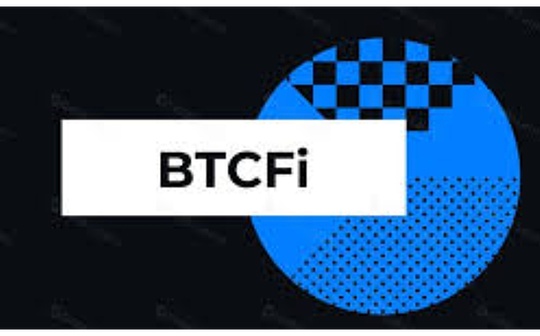137Labs Event on F(x): The Popular DeFi Solution and Its Innovative Ecosystem
In our previous article, we explored why Curve is regarded as a cornerstone of DeFi and discussed its future prospects. Today, we will introduce f(x) Protocol, a paradigm-shifting innovation within the Curve ecosystem.
f(x) Protocol, supported by AladdinDAO, is an innovative DeFi protocol designed to split yield-bearing assets into two components: a stablecoin (ftoken) and a leveraged token (xtoken). This approach offers unique investment and yield options for users with different risk preferences. The protocol incorporates lessons learned from the USDC depegging incident by eliminating reliance on off-chain assets and focusing on optimizing the flexibility and stability of on-chain yield-bearing assets. In today’s low-interest DeFi market, f(x) Protocol strives to become a new benchmark for innovation through continuous product refinement and creative design.
Q6 (Continued)
What is f(x) Protocol? What are its Product-Market Fit (PMF) innovations? How does its token mechanism work?
TAO explained the motivation behind the creation of f(x) Protocol by the AladdinDAO team, which was inspired by the USDC depegging event. Following the collapse of Silicon Valley Bank, the crypto market became more aware of off-chain risks, such as dependence on the traditional banking system and fiat-backed assets. USDC, being a dollar-pegged stablecoin with reserves exposed to traditional banking, ultimately experienced a depeg event. This led the AladdinDAO team to realize that stablecoins must be designed based on on-chain assets to reduce the risk of black swan events. Thus, the goal of f(x) Protocol is to create stablecoins backed by widely recognized crypto-native assets such as ETH and BTC, making it fundamentally different from algorithmic stablecoins like Luna, which lack collateral reserves.
TAO also highlighted the similarities and differences between f(x) Protocol and Pendle. Both protocols share a core design concept of splitting yield-bearing assets, but their approaches differ. Pendle splits yield-bearing assets into principal (PT) and yield (YT), where PT represents the principal and does not accrue yield, while YT provides access to yield but expires over time. In contrast, f(x) Protocol splits yield-bearing assets into stablecoins (ftoken) and leveraged tokens (xtoken). In the f(x) system, yield rights are transferred to the stablecoin holder, who enjoys higher, predictable returns with transparent income sources. Meanwhile, the leveraged token holder gives up yield rights in exchange for leverage, meaning they bear all the price movement of the underlying asset. If the asset appreciates or depreciates, the gains or losses are fully attributed to the leveraged token, providing a structure that caters to users with different risk preferences.
For example, f(x) Protocol allows stETH to be split into fxUSD and xstETH. stETH is held in protocol reserves, with all data transparently available on-chain. Suppose stETH has an annual yield of 3%. By depositing fxUSD into the stability pool (a process called stable farming), users can earn an annual yield of 7%-10% in the form of wstETH, depending on the leverage ratio of xstETH. This yield is significantly higher than holding stETH directly. Additionally, users earn extra rewards in the form of FXN emissions. Stable farming allows users to generate steady returns without engaging in complex arbitrage or high-risk strategies.
On the other hand, xstETH represents a novel approach to leveraging, different from traditional leveraged trading. Traditional leverage involves dynamic funding rates, counterparty requirements, and liquidation risks. In contrast, xstETH avoids these issues — it has no dynamic funding rates, requires no counterparties, and has almost no liquidation risk. In highly volatile conditions, the protocol automatically rebalances leverage ratios to prevent full liquidation of leveraged tokens. This design allows users to hold xstETH long-term without constant monitoring, making it a powerful solution for sustainable leveraged exposure. TAO noted that since the launch of f(x) Protocol, many users have held leveraged tokens like xstETH for extended periods without cashing out, achieving significant unrealized gains.
TAO further explained the fee structure of the protocol. f(x) Protocol charges a one-time opening fee and a closing fee, which are distributed among the stability pool, the treasury, and veFXN holders. From day one, the protocol has continuously shared these fees with its participants.
Lastly, TAO pointed out that the protocol also has a version with funding fees designed for non-yield-bearing assets, such as WBTC, to ensure flexibility in supporting a variety of asset types.
Ivan highlighted the unique value of f(x) Protocol, emphasizing that it is the only on-chain protocol that allows leveraging CVX. The protocol enables CVX to be split into two tokens: cvxUSD (ftoken) and xCVX (xtoken). cvxUSD allows users to earn more income from CVX protocol rewards, while xCVX offers leveraged exposure to CVX without funding fees or liquidation risks.
In the first half of 2024, during the “Restaking Points Summer,” f(x) Protocol quickly launched the eETH product from ether.fi. eETH can be split into rUSD (ftoken) and xeETH (xtoken). rUSD earns higher ETH liquid restaking yields as well as Eigenlayer points and ether.fi points, while xeETH provides leveraged exposure to ETH without funding fees or liquidation risks.
Ivan believes that f(x) Protocol meets the standard for paradigm innovation. It allows users to either earn stable returns without being exposed to asset price volatility or amplify their investment returns through leverage. Moreover, it makes long-term leveraged holding, which was previously impossible, a reality.
Ivan also compared f(x) Protocol to Pendle, noting both similarities and differences. Both protocols split underlying assets, but Pendle introduces fixed time periods. For example, its principal token (PT) grows in value over time but does not share rewards, while its yield token (YT) accelerates yield earning but expires after a set time. This design increases management costs for users. By contrast, f(x) Protocol removes time constraints, allowing users to hold ftokens and xtokens indefinitely, simplifying the user experience.
Lastly, Ivan addressed a common misconception about xtoken leverage drift causing losses. For example, if a user mints xstETH with a 2x leverage ratio and stETH’s price rises, the leverage ratio may drop to 1.8x. Redeeming xstETH at this point may return fewer stETH tokens. Similarly, after a price drop and recovery, the leverage ratio may again decrease, leading users to think they are losing assets when redeeming xstETH. Ivan refuted this, stating that, based on his own experience since the protocol’s launch, long-term xtoken holding increases the quantity of the underlying asset (e.g., stETH, eETH, CVX), even if token counts appear lower at redemption.
Oneone pointed out that f(x) Protocol is essentially an innovation based on term arbitrage principles, similar in concept to Pendle’s PT-YT model. f(x) Protocol splits underlying assets into two tokens with different levels of volatility: ftoken and xtoken. ftoken has low or no volatility, while xtoken takes on higher volatility. The two tokens are inherently leveraged against each other, meaning that holding both in proportion is equivalent to holding the original, unsplit asset.
Oneone believes this system offers a safe and flexible alternative for users who lack the ability to engage in contract trading. If users expect the market to decline, they can hold ftoken to lock in profits (essentially taking profits) while still earning yield from the underlying asset. Conversely, if users anticipate a market rally, they can hold xtoken to capture greater returns from price appreciation.
Q7 How Can f(x) Protocol Address Its Current Growth Challenges? How Will FX 2.0 Improve These Issues?
TAO explained the reasons behind the current low visibility and growth challenges of f(x) Protocol.
First, there is a general lack of market interest in DeFi during this cycle.
Second, while f(x) Protocol launched on Ethereum Mainnet, which offers the best on-chain liquidity and security, the high interaction costs discourage user adoption.
Third, the product has a learning curve; users need education and hands-on experience to fully understand its value.
Fourth, as a community-driven project without venture capital support, f(x) Protocol has limited funding for promotion.
Fifth, there is room for product optimization, such as addressing insufficient xToken leverage ratios due to high demand and simplifying the complex, costly process of earning yield with fToken.
Lastly, the stability pool design still carries risk exposure by holding a portion of the underlying asset, which can lead to unexpected volatility during extreme market conditions.
TAO shared that the AladdinDAO team has identified these issues and is addressing them with FX 2.0, a major upgrade.
To resolve the xToken leverage ratio issue, FX 2.0 will allow users to choose their desired leverage ratio when opening a position. This will be achieved by borrowing additional fToken to support higher leverage levels. The protocol will retain its one-time opening fee model with no funding fees.
To simplify the fToken yield generation process, FX 2.0 will enable users to directly deposit USDC into the stability pool, removing unnecessary steps and reducing complexity.
To address the stability pool risk, FX 2.0 will fully transition to a USD-based delta-neutral design, which eliminates the impact of underlying asset price volatility on the stability pool. This change will also make the protocol more attractive to compliant institutional funds.
Finally, to tackle the high interaction costs on Ethereum, AladdinDAO plans to deploy f(x) Protocol on the BASE chain, reducing transaction fees while maintaining strong security.
It’s worth noting that while users will be able to select their leverage ratios, the actual leverage ratio will still fluctuate with changes in the price of the underlying asset. If the price rises, the debt remains fixed, and the leverage ratio decreases. Conversely, if the price falls, the leverage ratio increases.
TAO emphasized that the AladdinDAO team values user needs and feedback, ensuring that all proposals aimed at enhancing the user experience are carefully considered and implemented.
Oneone believes that f(x) Protocol is currently severely undervalued, largely due to its low liquidity. This limited circulation causes significant price volatility when buying or selling FXN, which restricts its acceptance. However, as liquidity in the crypto market gradually improves — or even enters a phase of abundance — along with increasing recognition of f(x) Protocol’s value and the launch of FX 2.0 to drive a new wave of growth, FXN is expected to experience a flywheel effect, leading to a substantial increase in its valuation.
Q8
What Are the Growth Expectations for f(x) Protocol?
Oneone believes that f(x) Protocol represents the third layer of the Curve ecosystem (with the first layer being Curve, the second layer Convex, and the third layer cvxUSD-xCVX). As the Curve ecosystem continues to expand and its flywheel effect strengthens, it will drive the organic growth of f(x) Protocol, thereby boosting its valuation.
Ivan believes that almost all yield-bearing assets (except yield-bearing stablecoins) can be split into ftoken and xtoken. If f(x) Protocol’s model can be applied across a wide range of yield-bearing assets on various EVM-compatible chains, its modular functionality could unlock enormous value. With the growing focus on modularity in DeFi, this could further enhance the valuation of f(x) Protocol.
Ivan also identified two key directions that f(x) Protocol should prioritize.
The first is Real-World Assets (RWA), such as the collaboration between Curve and BlackRock (BUIDL). As more RWA projects emerge within the Curve ecosystem, a broader range of yield-bearing assets will become available as underlying assets for f(x) Protocol.
The second is the forex swap sector, as crypto payments gain greater market share. The demand for trading stablecoins, such as euro-based and dollar-based stablecoins, is expected to surge. This will likely lead to more related projects within the Curve ecosystem, providing additional yield-bearing assets that can serve as the foundation for f(x) Protocol.
TAO emphasized that f(x) Protocol will not stop at splitting blue-chip assets. The protocol has the capability to split a broader range of yield-bearing assets, provided these assets have good liquidity and yield potential.
TAO shared that modularity is already being trialed within f(x) Protocol, and with the release of Version 2.0, more underlying assets will be integrated into the protocol through this modular approach. Modularity is seen as an inevitable path for f(x) Protocol’s growth.
TAO compared f(x) Protocol to Uniswap’s AMM, which represented the paradigm innovation of the previous cycle. TAO believes that f(x) Protocol’s model has the potential to become the paradigm innovation of this cycle. He encouraged the community to witness how the market tests and recognizes its value.
声明:本文系金色财经原创稿件,版权属金色财经所有,未经授权不得转载,已经协议授权的媒体下载使用时须注明"稿件来源:金色财经",违者将依法追究责任。
提示:投资有风险,入市须谨慎。本资讯不作为投资理财建议。
24小时热文

 加密货币将在 2025 年取得“数十场小胜利”
加密货币将在 2025 年取得“数十场小胜利”W3C DAO
 AI代理的长期潜在风险
AI代理的长期潜在风险道说区块链
 特朗普就任首日:优先建立比特币国家储备?
特朗普就任首日:优先建立比特币国家储备?碳链价值

 加密总统特朗普和他价值 80 亿美元的 Meme 币
加密总统特朗普和他价值 80 亿美元的 Meme 币Foresight News




 2025 开年大戏 Meme 登堂入室
2025 开年大戏 Meme 登堂入室佐爷歪脖山
- 寻求报道
 金色财经APPiOS & Android
金色财经APPiOS & Android- 加入社群
Telegram - 意见反馈
- 返回顶部
- 返回底部





